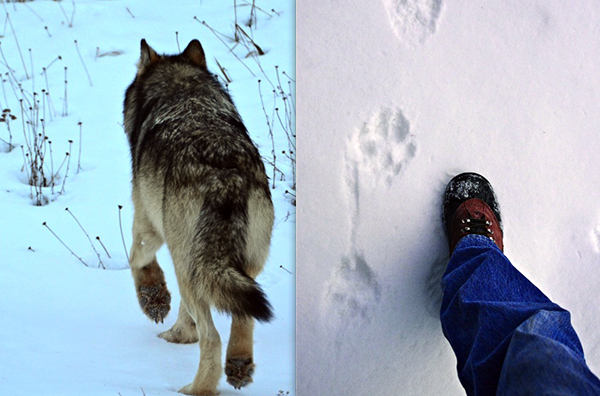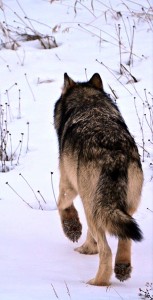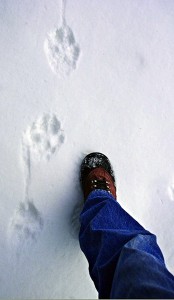Home »

Wolf tracks
By Larry Halverson
Friends of Kootenay
 Wolf tracks, like those of all canids, show four toes on each foot with claw marks present. The tracks of a wolf and large a dog are indistinguishable, even to a trained wolf biologist.
Wolf tracks, like those of all canids, show four toes on each foot with claw marks present. The tracks of a wolf and large a dog are indistinguishable, even to a trained wolf biologist.
The secret to telling the two apart is not in looking at the tracks, but in examining the behaviour of the animal that made them. A dog will move in a wandering crisscrossing path, stopping often to play, sniff, and dig. A wolf, on the other hand, moves more in a direct line. They march most often in single file and only stray from their course to investigate danger or potential food.
The wolf’s front legs are close together but their knees turn in and their paws turn outward allowing their front feet to set a path, which their hind feet follow precisely. When trotting, wolves leave a neat single line of track, an advantage when moving through deep snow.
 Wolf tracks will wander more when snow is not too deep, creating a pattern of braided footprints and making it easier for observers to number individuals traveling in the pack.
Wolf tracks will wander more when snow is not too deep, creating a pattern of braided footprints and making it easier for observers to number individuals traveling in the pack.
So next time you are out in Kootenay National Park – check for tracks.
Lead image: Wolves spend eight to 10 hours a day on the move and can travel great distances. Photos by Larry Halverson







